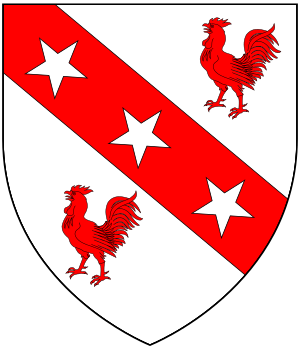George Henry Law facts for kids
Quick facts for kids The Right Reverend George Henry Law FRS FSA |
|
|---|---|
| Bishop of Bath and Wells | |

Bishop Law by William Beechey
|
|
| Church | Church of England |
| Diocese | Bath and Wells |
| Elected | 1824 |
| Reign ended | 1845 (death) |
| Predecessor | Richard Beadon |
| Successor | Richard Bagot |
| Other posts | Bishop of Chester (1812–1824) |
| Personal details | |
| Born | 12 September 1761 Peterhouse, Cambridge, England |
| Died | 22 September 1845 (aged 84) Banwell Caves, Somerset, England |
| Buried | Wells Cathedral |
| Nationality | English |
| Denomination | Anglican |
| Parents | Edmund Law (Bishop of Carlisle) |
| Spouse |
Jane Adeane
(m. 1784) |
| Education | Charterhouse School |
| Alma mater | Queens' College, Cambridge |
George Henry Law (born September 12, 1761 – died September 22, 1845) was an important leader in the Church of England. He served as the Bishop of Chester starting in 1812. Later, from 1824 until his death, he was the Bishop of Bath and Wells.
He was born in Peterhouse, Cambridge, England. His father, Edmund Law, was also a bishop. George went to Charterhouse School and Queens' College, Cambridge. He was very smart, graduating as the second "wrangler" (a top math student). Bishop Law is best known for creating a much better way to train priests.
Contents
A New Way to Train Priests
Bishop Law noticed that the training for priests was not very good. Most priests were ordained (officially made priests) just because they had a degree from Oxford or Cambridge. Some only had private lessons from another priest. This meant that the quality of priests was very different. Bishop Law wanted to make sure all priests met a high standard.
Founding St Bees Theological College
In 1816, Bishop Law visited Whitehaven in Cumbria. He saw that the area, especially Lancashire, was growing fast because of the Industrial Revolution. This meant more people needed churches and priests. He realized there weren't enough well-trained clergy.
There used to be a monastery at St Bees, but it was mostly gone. When Bishop Law visited, the main church building was missing its roof. He met the powerful Lowther family in Whitehaven. They agreed to pay to fix the church building. This would turn it into a new college for training priests.
This new college, called St Bees Theological College, was very important. It was the first place outside of Oxford or Cambridge specifically for training Anglican priests. Bishop Law was allowed to choose the new vicar for St Bees and the head of the college. This was unusual at the time.
Why the Lowthers Helped
The Lowther family had a reason to help. They wanted to improve their public image. People had accused them of unfairly getting rights to the valuable mineral mines in Whitehaven. They were also suspected of trying to keep this quiet by firing the headmaster of St Bees School. Helping Bishop Law with the college was a way for them to look good.
Bishop Law's Family
George Henry Law came from a notable family. His father, Edmund Law, was the Bishop of Carlisle. George had several well-known brothers:
- John Law (1745–1810), who was also a bishop.
- Ewan Law (1747–1829), a Member of Parliament.
- Edward Law (1750–1818), who became the Lord Chief Justice.
- Thomas Law (1756–1834), who was a property investor in Washington, D.C., USA.
In 1784, George Henry Law married Jane Adeane. They had nine children:
- Anna Law (1786–1832)
- Joanna Law (1787–1848), who married Alexander Powell, a Member of Parliament.
- Augusta Law (1789–1822)
- James Thomas Law (1790–1876), who became a church official in the Diocese of Lichfield.
- George Law (1794–1811)
- Henry Law (1797–1884), who became the Dean of Gloucester.
- Robert Vanbrugh Law (1799–1884), a clergyman.
- Jane Waugh Law (1801–1843)
- Margaret Law (1803–1838)


